| UH-1 Iroquois / HU-1 "Huey" | |
|---|---|
 |
|
| A Bell UH-1H Iroquois | |
| Role | Utility helicopter |
| Manufacturer | Bell Helicopter |
| First flight | 20 October 1956 (XH-40) |
| Introduction | 1959 |
| Status | In service |
| Primary users | United States Army (historical) Japan Ground Self-Defense Force Australian Army (historical) See Operators section for others |
| Produced | 1956–1987 |
| Number built | >16,000 |
| Variants | Bell UH-1N Twin Huey Bell 204/205 Bell 212 |
| Developed into | Bell AH-1 Cobra Bell 214 |
The Iroquois was originally designated HU-1, hence the Huey nickname, which has remained in common use, despite the official redesignation to UH-1 in 1962.[2] The UH-1 first saw service in combat operations during the Vietnam War, with around 7,000 helicopters deployed. The Bell 204 and 205 are Iroquois versions developed for the civil market.
Contents
Development
A Bell XH-40, a prototype of the UH-1
Model 204
Powered by a prototype Lycoming YT53-L-1 (LTC1B-1) engine producing 700 shp (520 kW), the XH-40 first flew on 20 October 1956[5] at Fort Worth, Texas, with Bell's chief test pilot, Floyd Carlson, at the controls. Two more prototypes were built in 1957, and the Army had previously ordered six YH-40 service test aircraft, even before the first prototype had flown.[3][6] In March 1960, the Army awarded Bell a production contract for 100 aircraft, which was designated as the HU-1A and officially named Iroquois after the Native American nations.[7]The helicopter quickly developed a nickname derived from its designation of HU-1, which came to be pronounced as "Huey". The reference became so popular that Bell began casting the name on the helicopter's anti-torque pedals.[2] The official U.S. Army name was almost never used in practice.[8] After September 1962, the designation for all models was changed to UH-1 under a unified Department of Defense (DOD) designation system, but the nickname remained.
While glowing in praise for the helicopter's advances over piston-engined helicopters, the Army reports from the service tests of the YH-40 found it to be underpowered with the production T53-L-1A powerplant producing a maximum continuous 770 shaft horsepower (570 kilowatts).[N 1] The Army indicated the need for improved follow-on models even as the first UH-1As were being delivered. In response, Bell proposed the UH-1B, equipped with the Lycoming T53-L-5 engine producing 960 shp (720 kW) and a longer cabin that could accommodate either seven passengers or four stretchers and a medical attendant. Army testing of the UH-1B started in November 1960, with the first production aircraft delivered in March 1961.[3]
Bell commenced development of the UH-1C in 1960 in order to correct aerodynamic deficiencies of the armed UH-1B. Bell fitted the UH-1C with a 1,100 shp (820 kW) T53-L-11 engine to provide the power needed to lift all weapons systems in use or under development. The Army would eventually refit all UH-1B aircraft with the same engine. A new rotor system was developed for the UH-1C to allow higher air speeds and reduce the incidence of retreating blade stall during diving engagements. The improved rotor resulted in better maneuverability and a slight speed increase.[6] The increased power and a larger diameter rotor required Bell's engineers to design a new tail boom for the UH-1C. The longer tail boom incorporated a wider chord vertical fin on the tail rotor pylon and larger synchronized elevators.
Bell also introduced a dual hydraulic control system for redundancy as well as an improved inlet filter system for the dusty conditions found in southeast Asia. The UH-1C fuel capacity was increased to 242 US gallons (920 liters), and gross weight was raised to 9,500 lb (4,309 kg), giving a nominal useful load of 4,673 lb (2,120 kg). UH-1C production started in June 1966 with a total of 766 aircraft produced, including five for the Royal Australian Navy and five for Norway.
Model 205
Ventura County Sheriff's Department Air Unit Fire Support Bell HH-1H
The Model 205 prototype flew on 16 August 1961.[10][11] Seven pre-production/prototype aircraft had been delivered for testing at Edwards AFB starting in March 1961. The 205 was initially equipped with a 44-foot (13.4 m) main rotor and a Lycoming T53-L-9 engine with 1,100 shp (820 kW). The rotor was lengthened to 48 feet (14.6 m) with a chord of 21 in (53 cm). The tailboom was also lengthened, in order to accommodate the longer rotor blades. Altogether, the modifications resulted in a gross weight capacity of 9,500 lb (4,309 kg). The Army ordered production of the 205 in 1963, produced with a T53-L-11 engine for its multi-fuel capability.[N 2][12] The prototypes were designated as YUH-1D and the production aircraft was designated as the UH-1D.
In 1966, Bell installed the 1,400 shp (1,000 kW) Lycoming T53-L-13 engine to provide more power for the aircraft. The pitot tube was relocated from the nose to the roof of the cockpit, to prevent damage during landing. Production models in this configuration were designated as the UH-1H.[8][13]
Marine Corps
In 1962, the United States Marine Corps held a competition to choose an assault support helicopter to replace the Cessna O-1 fixed-wing aircraft and the Kaman OH-43D helicopter. The winner was the UH-1B, which was already in service with the Army. The helicopter was designated the UH-1E and modified to meet Marine requirements. The major changes included the use of all-aluminum construction for corrosion resistance,[N 3] radios compatible with Marine Corps ground frequencies, a rotor brake for shipboard use to stop the rotor quickly on shutdown and a roof-mounted rescue hoist.The UH-1E was first flown on 7 October 1963, and deliveries commenced 21 February 1964, with 192 aircraft completed. Due to production line realities at Bell, the UH-1E was produced in two different versions, both with the same UH-1E designation. The first 34 built were essentially UH-1B airframes with the Lycoming T53-L-11 engine producing 1,100 shp (820 kW). When Bell switched production to the UH-1C, the UH-1E production benefited from the same changes. The Marine Corps later upgraded UH-1E engines to the Lycoming T53-L-13, which produced 1,400 shp (1,000 kW), after the Army introduced the UH-1M and upgraded their UH-1C helicopters to the same engine.
Air Force
The United States Air Force's (USAF) competition for a helicopter to be used for support on missile bases included a specific requirement to mandate the use of the General Electric T58 turboshaft as a powerplant. The Air Force had a large inventory of these engines on hand for its fleet of HH-3 Jolly Green Giant rescue helicopters and using the same engine for both helicopters would save costs. In response, Bell proposed an upgraded version of the 204B with the T58 engine. Because the T58 output shaft is at the rear, and was thus mounted in front of the transmission on the HH-3, it had to have a separate offset gearbox (SDG or speed decreaser gearbox) at the rear, and shafting to couple to the UH-1 transmission.Twin–engine variants
The single–engine UH-1 variants were followed by the twin-engine UH-1N Twin Huey and years later the UH-1Y Venom. Bell began development of the UH-1N for Canada in 1968. It changed to the more powerful Pratt & Whitney Canada PT6T twin-engine set. The U.S. also ordered the helicopter with the U.S. Air Force receiving it in 1970. Canada's military, the U.S. Marine Corps, and the U.S. Navy first received the model in 1971.[14]In 1996, the USMC began the H-1 upgrade program by awarding a contract to Bell Helicopter for developing the improved UH-1Y and AH-1Zs variants.[15] The UH-1Y includes a lengthened cabin, four-blade rotor, and two more powerful GE T700 engines.[1] The UH-1Y entered service with the USMC in 2008.[16]
Design
The UH-1 has a metal fuselage of semi-monocoque construction with tubular landing skids and two rotor blades on the main rotor.[17] Early UH-1 models featured a single Lycoming T53 turboshaft engine in versions with power ratings from 700 shp (522 kW) to 1,400 shp (1,040 kW).[6] Later UH-1 and related models would feature twin engines and four-blade rotors.All aircraft in the UH-1 family have similar construction. The UH-1H is the most-produced version, and is representative of all types. The main structure consists of two longitudinal main beams that run under the passenger cabin to the nose and back to the tail boom attachment point. The main beams are separated by transverse bulkheads and provide the supporting structure for the cabin, landing gear, under-floor fuel tanks, transmission, engine and tail boom. The main beams are joined at the lift beam, a short aluminum girder structure that is attached to the transmission via a lift link on the top and the cargo hook on the bottom and is located at the aircraft's center of gravity. The lift beams were changed to steel later in the UH-1H's life, due to cracking on high-time airframes. The semi-monocoque tail boom attaches to the fuselage with four bolts.[18]
The UH-1H's dynamic components include the engine, transmission, rotor mast, main rotor blades, tail rotor driveshaft, and the 42-degree and 90-degree gearboxes. The transmission is of a planetary type and reduces the engine's output to 324 rpm at the main rotor. The two-bladed, semi-rigid rotor design, with pre-coned and underslung blades, is a development of early Bell model designs, such as the Bell 47 with which it shares common design features, including a dampened stabilizer bar. The two-bladed system reduces storage space required for the aircraft, but at a cost of higher vibration levels. The two-bladed design is also responsible for the characteristic 'Huey thump' when the aircraft is in flight, which is particularly evident during descent and in turning flight. The tail rotor is driven from the main transmission, via the two directional gearboxes which provide a tail rotor speed approximately six times that of the main rotor to increase tail rotor effectiveness.[18]
The UH-1H also features a synchronized elevator on the tail boom, which is linked to the cyclic control and allows a wider center of gravity range. The standard fuel system consists of five interconnected fuel tanks, three of which are mounted behind the transmission and two of which are under the cabin floor. The landing gear consists of two arched cross tubes joining the skid tubes. The skids have replaceable sacrificial skid shoes to prevent wear of the skid tubes themselves. Skis and inflatable floats may be fitted.[18]
Typical armament for UH-1 gunship
While the five main fuel tanks are self-sealing, the UH-1H was not equipped with factory armor, although armored pilot seats were available.[18]
The UH-1H's dual controls are conventional for a helicopter and consist of a single hydraulic system boosting the cyclic stick, collective lever and anti-torque pedals. The collective levers have integral throttles, although these are not used to control rotor rpm, which is automatically governed, but are used for starting and shutting down the engine. The cyclic and collective control the main rotor pitch through torque tube linkages to the swash plate, while the anti-torque pedals change the pitch of the tail rotor via a tensioned cable arrangement. Some UH-1Hs have been modified to replace the tail rotor control cables with torque tubes similar to the UH-1N Twin Huey.[18]
Operational history
U.S. Army
UH-1Ds airlift members of the 2nd Battalion, 14th Infantry Regiment from the Filhol Rubber Plantation area to a staging area in 1966.
A rifle squad from the 1st Squadron, 9th Cavalry exiting from a UH-1D.
UH-1s also flew "hunter-killer" teams with observation helicopters, namely the Bell OH-58A Kiowa and the Hughes OH-6 Cayuse (Loach).[8][13] Towards the end of the conflict, the UH-1 was tested with TOW missiles, and two UH-1B helicopters equipped with the XM26 Armament Subsystem were deployed to help counter the 1972 Easter Invasion.[23] USAF Lieutenant James P. Fleming piloted a UH-1F on a 26 November 1968 mission that earned him the Medal of Honor.[24]
Two UH-1B Huey gunships from HAL-3 "Seawolf" sit on the deck of the USS Garrett County in Mekong Delta, South Vietnam.
The Army tested a great variety of experimental weapons on the UH-1; nearly anything that could be carried. The Army desired weapons with large calibers and high rates of fire, which led to the testing of a 20 mm cannon on a large mount bolted to the cabin floor. The size of the weapon allowed very little room for movement. The Army further tested a full-size Vulcan cannon firing out the door of a UH-1. It was capable of firing 2400 rounds per minute, or about 40 rounds per second. Despite this being a significant reduction from the nearly 100 rounds per second fired by a standard Vulcan cannon, the installation proved "too kinetic" for the UH-1. Podded versions of the M24 20 mm cannon were tested in combat over Vietnam. There was a wide variety of 7.62 mm automatic weapons tested, including different installations of the M60 machine gun. AS-10 and SS-11 missiles were tested in several different configurations. High-capacity rocket launchers were also tested, such as the XM3 launcher, which had 24 launching tubes. Press photos were taken with the XM5 and XM3 installed on the same aircraft, but this arrangement could not be used because it was more than the gross take-off weight of the aircraft.[25]
During the 1972 Easter offensive by North Vietnam, experimental models of the TOW-firing XM26 were taken out of storage and sent to South Vietnam to help stop the onslaught. The pilots had never fired a TOW missile before, and were given just crash courses. Despite having little training with the units, the pilots managed to hit targets with 151 of the 162 missiles fired in combat, including a pair of tanks. The airborne TOW launchers were known as "Hawks Claws" and were based at Camp Holloway.[25] During the war 7,013 UH-1s served in Vietnam and of these 3,305 were destroyed. In total 1,074 Huey pilots were killed, along with 1,103 other crew members.[26]
The US Army phased out the UH-1 with the introduction of the UH-60 Black Hawk, although the Army UH-1 Residual Fleet had around 700 UH-1s that were to be retained until 2015, primarily in support of Army Aviation training at Fort Rucker and in selected Army National Guard units. Army support for the craft was intended to end in 2004. The UH-1 Huey was retired from active Army service in 2005.[27] In 2009, Army National Guard retirements of the UH-1 accelerated with the introduction of the UH-72 Lakota.[28][29][30] The final UH-1 was retired in 2016.[31]
U.S. Air Force
Republic of Vietnam Air Force (VNAF) UH-1H lands during a combat mission in Southeast Asia in 1970
US Air Force UH-1s were often equipped with automatic grenade launchers in place of the door guns. The XM-94 grenade launcher had been tested on Army aircraft before being used by the Air Force. The unit was capable of firing 400 grenades per minute, up to 1,500 yards effective range.[33]
Today, the US Air Force uses the UH-1N for support of intercontinental ballistic missile sites, including transport of security personnel and distinguished visitors.[34][35]
The US Navy began acquiring UH-1B helicopters from the Army and these aircraft were modified into gunships with special gun mounts and radar altimeters and were known as Seawolves in service with Navy Helicopter Attack (Light) (HA(L)-3). UH-1C helicopters were also acquired in the 1970s.[36][37] The Seawolves worked as a team with Navy river patrol operations.[38]
Four years after the disestablishment of HA(L)-3, the Navy determined that it still had a need for gunships, establishing two new Naval Reserve Helicopter Attack (Light) Squadrons as part of the newly formed Commander, Helicopter Wing Reserve (COMHELWINGRES) in 1976. Helicopter Attack Squadron (Light) Five (HA(L)-5), nicknamed the "Blue Hawks", was established at Naval Air Station Point Mugu, California on the 11 June 1977 and its sister squadron, Helicopter Attack Squadron (Light) Four (HA(L)-4), known as the Red Wolves, was formed at Naval Air Station Norfolk, Virginia on 1 July 1976.[39]
Operation Enduring Freedom (2001–present)
UH-1Hs have been used by the American Drug Enforcement Administration (DEA) in counter-narcotics raids in the ongoing conflict in Afghanistan. Operated by contractors, these Hueys provide transportation, surveillance, and air support for DEA FAST teams. Four UH-1Hs and two Mi-17s were used in a raid in July 2009 which led to the arrest of an Afghan Border Police commander.[40]Argentina
UH-1Hs at Port Stanley Airport. These were transported to the islands by C-130H Hercules and did not have their rotors reattached yet
Australia
A 9 Sqn UH-1D in Vietnam, 1970
In 1989 and 1990 the RAAF's UH-1H Iroquois were subsequently transferred to the 171st Aviation Squadron in Darwin, Northern Territory and the 5th Aviation Regiment based in Townsville, Queensland following the decision that all battlefield helicopters would be operated by the Australian Army.[44] On 21 September 2007, the Australian Army retired the last of their Bell UH-1s. The last flight occurred in Brisbane on that day with the aircraft replaced by MRH-90 medium helicopters and Tiger armed reconnaissance helicopters.[45]
The Royal Australian Navy's 723 Squadron also operated seven UH-1B from 1964 to 1989, with three of these aircraft lost in accidents during that time.[46] 723 Squadron deployed Iroquois aircraft and personnel as part of the Experimental Military Unit during the Vietnam War.[47]
El Salvador
UH-1s were operated by El Salvador Air Force, being at its time the biggest and most experienced combat helicopter force in Central and South America, fighting during 10 years and being trained by US Army in tactics developed during the Vietnam War. UH-1M and UH-1H helicopters used by El Salvador were modified to carry bombs instead of rocket pods.[48]Germany
German UH-1D
Israel
Israel withdrew its UH-1s from service in 2002, after thirty three years of service. They were replaced by Sikorsky UH-60 Blackhawk helicopters beginning with an initial batch of 10 delivered in 1994. While some were passed on to pro-Israeli militias in Lebanon, eleven other UH-1Ds were reportedly sold to a Singapore-based logging company but were, instead, delivered in October 1978 to the Rhodesian Air Force to skirt the UN endorsed embargo imposed during the Rhodesian Bush War.[49][50]Japan
A JGSDF Bell-Fuji UH-1H conducting Kashmir earthquake relief activities (2005)
UH-1s of the Japan Ground Self-Defense Force were deployed for disaster relief after the 2011 Tōhoku earthquake and tsunami, and also conducted reconnaissance over the stricken Fukushima Daiichi Nuclear Power Plant.[54]
Lebanon
During the Battle of Nahr el-Bared camp in North Lebanon, the Lebanese army, lacking fixed-wing aircraft, modified the UH-1H to carry 500 lb (227 kg) Mark 82 bombs to strike militant positions, i.e. helicopter bombing. Special mounts engineered by the Lebanese army were added to the sides of each Huey to carry the high explosive bombs.[55]New Zealand
A Royal New Zealand Air Force No. 3 Squadron UH-1H Iroquois, November 2009
The RNZAF is currently in the process of retiring the Iroquois. The NHIndustries NH90 has been chosen as its replacement, eight active NH90 helicopters plus one spare are being procured. This process was initially expected to be completed by the end of 2013, but was delayed until 2016. Individual aircraft were retired as they reach their next major 'group' servicing intervals; the UH-1H is to be retired as the NH90 fleet is stood up.[58] On 21 May 2015, the remaining UH-1H fleet of six helicopters conducted a final tour of the country ahead of its planned retirement on 1 July. During 49 years of service the type had seen service in areas including the U.K., Southeast Asia, Timor, the Solomon Islands, various South Pacific nations, and the Antarctic.[59]
Philippines
Philippine Air Force Airmen with the 6th SOS unit of the USAF during a bilateral exercise
The PAF is pursuing the acquisition of 21 additional UH-1H helicopters as of 2013.[61][62]
Rhodesia
Very late in the Rhodesian Bush War the Rhodesian Air Force obtained 11 former Israeli Agusta-Bell 205As,[63] known in service as Cheetahs. After much work these then formed No. 8 Sqn Rhodesian Air Force and took part as troop transports in the counter-insurgency fight. One was lost in combat in September 1979, when hit in Mozambique by a RPG. At least another three were lost. The survivors were put up for sale in 1990.[64]Variant overview
U.S. Military variants
UH-1A Iroquois in flight
A USAF TH-1H out of Randolph Air Force Base, 2005
- XH-40: The initial Bell 204 prototype. Three prototypes were built, equipped with the Lycoming XT-53-L-1 engine of 700 shp (520 kW).[13]
- YH-40: Six aircraft for evaluation, as XH-40 with 12-inch (300 mm) cabin stretch and other modifications.
- Bell Model 533: One YH-40BF rebuilt as a flight test bed with turbojet engines and wings.
- HU-1A: Initial Bell 204 production model, redesignated as the UH-1A in 1962.[13] 182 built.[65]
- HU-1B: Upgraded HU-1A, various external and rotor improvements. Redesignated UH-1B in 1962.[13] 1014 built plus four prototypes designated YUH-1B.[65]
- NUH-1B: a single test aircraft, serial number 64-18261.[13]
- UH-1C: The UH-1B gunship lacked the power necessary to carry weapons and ammunition and keep up with transport Hueys, and so Bell designed yet another Huey variant, the "UH-1C", intended strictly for the gunship role. It is an UH-1B with improved engine, modified blades and rotor-head for better performance in the gunship role.[13] 767 built.[65]
- YUH-1D: Seven pre-production prototypes of the UH-1D.
- UH-1D: Initial Bell 205 production model (long fuselage
version of the 204). Designed as a troop carrier to replace the CH-34
then in US Army service.[13] 2008 built many later converted to UH-1H standard.[65]
- HH-1D: Army crash rescue variant of UH-1D.[13]
- UH-1E: UH-1B/C for USMC with different avionics and equipment.[13] 192 built.[65]
- NUH-1E: UH-1E configured for testing.
- TH-1E: UH-1C configured for Marine Corps training. Twenty were built in 1965.[13]
- UH-1F: UH-1B/C for USAF with General Electric T58-GE-3 engine of 1,325 shp (988 kW).[13] 120 built.[65]
Base Rescue Moose Jaw CH-118 Iroquois helicopters at CFB Moose Jaw, 1982
- UH-1H: Improved UH-1D with a Lycoming T53-L-13 engine of 1,400 shp (1,000 kW).[13] 5435 built.[65]
- CUH-1H: Canadian Forces designation for the UH-1H utility transport helicopter. Redesignated CH-118.[13][66] A total of 10 built.[65]
- EH-1H: Twenty-two aircraft converted by installation of AN/ARQ-33 radio intercept and jamming equipment for Project Quick Fix.
- HH-1H: SAR variant for the USAF with rescue hoist.[13] A total of 30 built.[65]
- JUH-1: Five UH-1Hs converted to SOTAS battlefield surveillance configuration with belly-mounted airborne radar.[13]
- TH-1H: Recently modified UH-1Hs for use as basic helicopter flight trainers by the USAF.
- HH-1K: Purpose built SAR variant of the Model 204 for the US Navy with USN avionics and equipment.[13] 27 built.[65]
- TH-1L: Helicopter flight trainer based on the HH-1K for the USN. A total of 45 were built.[13]
- UH-1L: Utility variant of the TH-1L. Eight were built.[13]
- UH-1M: Gunship specific UH-1C upgrade with Lycoming T53-L-13 engine of 1,400 shp (1,000 kW).[13]
- UH-1N: Initial Bell 212 production model, the Bell "Twin Pac" twin-engined Huey powered by Pratt & Whitney Canada T400-CP-400.[13]
- UH-1P: UH-1F variant for USAF for special operations use and attack operations used solely by the USAF 20th Special Operations Squadron, "the Green Hornets".[13]
- EH-1U: No more than 2 UH-1H aircraft modified for Multiple Target Electronic Warfare System (MULTEWS).[67]
- UH-1V: Aeromedical evacuation, rescue version for the US Army.[13]
- EH-1X: Ten Electronic warfare UH-1Hs converted under "Quick Fix IIA".[13]
- UH-1Y: Upgraded variant developed from existing upgraded late model UH-1Ns, with additional emphasis on commonality with the AH-1Z.
Other military variants
- Bell 204: Bell Helicopters company designation, covering
aircraft from the XH-40, YH-40 prototypes to the UH-1A, UH-1B, UH-1C,
UH-1E, UH-1F, HH-1K, UH-1L, UH-1P and UH-1M production aircraft.
- Agusta-Bell AB 204: Military utility transport helicopter. Built under license in Italy by Agusta.
- Agusta-Bell AB 204AS: Anti-submarine warfare, anti-shipping version of the AB 204 helicopter.
- Fuji-Bell 204B-2: Military utility transport helicopter. Built under license in Japan by Fuji Heavy Industries. Used by the Japan Ground Self-Defense Force under the name Hiyodori.
- Bell 205: Bell Helicopters company designation of the UH-1D and UH-1H helicopters.
- Bell 205A-1: Military utility transport helicopter version, initial version based on the UH-1H.
- Bell 205A-1A: As 205A-1, but with armament hardpoints and military avionics. Produced specifically for Israeli contract.
- Agusta-Bell 205: Military utility transport helicopter. Built under license in Italy by Agusta.
- AIDC UH-1H: Military utility transport helicopter. Built under license in Taiwan by Aerospace Industrial Development Corporation.[68]
- Dornier UH-1D: Military utility transport helicopter. Built under license in Germany by Dornier Flugzeugwerke.[68]
- UH-1G: Unofficial name applied locally to at least one armed UH-1H by the Khmer Air Force in Cambodia.[69]
- Fuji-Bell 205A-1: Military utility transport helicopter. Built under licence in Japan by Fuji. Used by the Japanese Ground Self Defense Force under the designation HU-1H.[70]
JGSDF UH-1J in Okadama STA, 2007
- UH-1J: An improved Japanese version of the UH-1H built under license in Japan by Fuji Heavy Industries was locally given the designation UH-1J.[71] Among improvements were an Allison T53-L-703 turboshaft engine providing 1,343 kW (1,800 shp), a vibration-reduction system, infrared countermeasures, and a night-vision-goggle (NVG) compatible cockpit.[72]
- Bell 211 Huey Tug With up-rated dynamic system and larger wide chord blades, the Bell 211 was offered for use as the US Army's prime artillery mover, but not taken up.[8]
- Bell Huey II: A modified and re-engined UH-1H, improvements were an Allison T53-L-703 turboshaft engine providing 1,343 kW (1,800 shp), a vibration-reduction system, infrared countermeasures, and a night-vision-goggle (NVG) compatible cockpit.significantly upgrading its performance, and its cost-effectiveness. Currently offered by Bell in cooperation with the Philippine Air Force to all current military users of the type.
- UH-1/T700 Ultra Huey: Upgraded commercial version, fitted with a 1,400-kW (1900-shp) General Electric T700-GE-701C turboshaft engine.[73]
Operators
Aircraft on display
Specifications (UH-1D)
General characteristics- Crew: 1–4
- Capacity: 3,880 lb (1,760 kg) including 14 troops, or 6 stretchers, or equivalent cargo
- Length: 57 ft 1 in (17.40 m) with rotors
- Width: 8 ft 7 in (2.62 m) (Fuselage)
- Height: 14 ft 5 in (4.39 m)
- Empty weight: 5,215 lb (2,365 kg)
- Gross weight: 9,040 lb (4,100 kg)
- Max takeoff weight: 9,500 lb (4,309 kg)
- Powerplant: 1 × Lycoming T53-L-11 turboshaft, 1,100 shp (820 kW)
- Main rotor diameter: 48 ft 0 in (14.63 m)
- Maximum speed: 135 mph (217 km/h; 117 kn)
- Cruise speed: 125 mph (201 km/h; 109 kn)
- Range: 315 mi (274 nmi; 507 km)
- Service ceiling: 19,390 ft (5,910 m) (Dependent on environmental factors such as weight, outside temp., etc)
- Rate of climb: 1,755 ft/min (8.92 m/s)
- Power/mass: 0.15 hp/lb (0.25 kW/kg)
Variable, but may include a combination of:
- 2 × 7.62 mm M60 machine gun, or 2 × 7.62 mm GAU-17/A machine gun
- 2 × 7-round or 19-round 2.75 in (70 mm) rocket pods
- 2 × 7.62 mm Rheinmetall MG3 (German Army and German Luftwaffe)
- 2 × .303 Browning Mk II (Rhodesian, twin machine guns mounted on port side)
Notable appearances in media
The image of American troops disembarking from a Huey has become an iconic image of the Vietnam War, and can be seen in many films, video games and television shows on the subject, as well as more modern settings. The UH-1 is seen in many films about the Vietnam War, including The Green Berets, Platoon, Hamburger Hill, Apocalypse Now,[60] Casualties of War, and Born on the Fourth of July. It is prominently featured in We Were Soldiers as the main helicopter used by the Air Cavalry in the Battle of Ia Drang. Author Robert Mason recounts his career as a UH-1 "Slick" pilot in his memoir, Chickenhawk.The 2002 journey of "Huey 091", displayed in the Smithsonian American History Museum, is outlined in the documentary In the Shadow of the Blade.[74]
See also
- Bell Huey – overview of all models
- Related development
- Bell AH-1 Cobra
- Bell AH-1 SuperCobra
- Bell UH-1N Twin Huey
- Bell UH-1Y Venom
- Bell 204/205
- Bell 212
- Bell 214
- Bell 412
- Bell 533
- Panha Shabaviz 2-75
- Aircraft of comparable role, configuration and era
- Related lists
References
Footnotes
- Quote: "The UH-1B was the first helicopter gunship to achieve widespread combat use. It was also the first to carry the name "Cobra"
Citations
- "In The Shadow of The Blade." In The Shadow of The Blade, 2004. Retrieved: 5 August 2009.
Bibliography
- Andrade, John M. U.S. Military Aircraft Designations and Serials since 1909. Hersham, Surrey, UK: Midland Counties Publications, 1979. ISBN 0-904597-22-9.
- Apostolo, Giorgio. "Bell 204", "Bell 205". The Illustrated Encyclopedia of Helicopters. New York: Bonanza Books, 1984. ISBN 0-517-43935-2.
- Australian Naval Aviation Museum (ANAM). Flying Stations: A Story of Australian Naval Aviation. St Leonards, NSW: Allen & Unwin. 1998. ISBN 1-86448-846-8
- Brent, W. A. Rhodesian Air Force A Brief History 1947–1980. Ottawa, Ontario, Canada: Freeworld Publications, 1988. ISBN 0-620-11805-9.
- Chant, Christopher. Fighting Helicopters of the 20th Century (20th Century Military Series). Christchurch, Dorset, UK: Graham Beehag Books, 1996. ISBN 1-85501-808-X.
- Debay, Yves. Combat Helicopters. Paris: Histoire & Collections, 1996. ISBN 2-908182-52-1.
- Donald, David, ed. "Bell Model 212 Twin Two-Twelve". The Complete Encyclopedia of World Aircraft. New York: Barnes & Noble Books, 1997. ISBN 0-7607-0592-5.
- Drendel, Lou. Gunslingers in Action. Carrollton, Texas: Squadron/Signal Publications, 1974. ISBN 0-89747-013-3.
- Drendel, Lou. Huey. Carrollton, Texas: Squadron/Signal Publications, 1983. ISBN 0-89747-145-8.
- Eather, Steve (1995). Flying Squadrons of the Australian Defence Force. Weston Creek, ACT: Aerospace Publications. ISBN 1-875671-15-3.
- Eden, Paul, ed. "Bell UH-1 Iroquois". Encyclopedia of Modern Military Aircraft. London: Amber Books, 2004. ISBN 1-904687-84-9.
- Francillon, René, J. Vietnam: The War in the Air. New York: Arch Cape Press, 1987. ISBN 0-517-62976-3.
- Guilmartin, John Francis and Michael O'Leary. The Illustrated History of the Vietnam War, Volume 11: Helicopters. New York: Bantam Books, 1988. ISBN 0-553-34506-0.
- McGowen, Stanley S. Helicopters: An Illustrated History of Their Impact. Santa Barbara, California: ABC-CLIO, 2005. ISBN 978-1-85109-468-4.
- Mesko, Jim. Airmobile: The Helicopter War in Vietnam. Carrollton, Texas: Squadron/Signal Publications, 1984. ISBN 0-89747-159-8.
- Mikesh, Robert C. Flying Dragons: The South Vietnamese Air Force. London: Osprey Publishing, 1988. ISBN 0-85045-819-6.
- Mutza, Wayne. UH-1 Huey In Action. Carrollton, Texas: Squadron/Signal Publications, 1986. ISBN 0-89747-179-2.
- Mutza, Wayne. "Covertly to Cambodia". Air Enthusiast, Thirty-two, December 1986 – April 1987, pp. 22–31. Bromley, UK: Pilot Press. ISSN 0143-5450.
- Mutza, Wayne. UH-1 Huey in Color. Carrollton, Texas: Squadron/Signal Publications, 1992. ISBN 0-89747-279-9.
- Pattillo, Donald M. Pushing the Envelope: The American Aircraft Industry. Ann Arbor, Michigan: University of Michigan Press, 2001. ISBN 978-0-472-08671-9;.
- Specifications for Bell 204, 205 and 214 Huey Plus
External links
| Wikimedia Commons has media related to Bell UH-1 family. |
- Bell Huey II page on BellHelicopter.com
- UH-1D/UH-1H Iroquois utility helicopter and UH-1 Factsheet on Army.mil
- UH-1 history on Navy Air web site
- The Bell UH-1 Huey at Greg Goebel's Air Vectors site
- Philippine Air Force Huey II Project
- An account of a Medal of Honor rescue flying a Green Hornet
- History of the Huey on timothypruittphoto.com
- HA(L)-3 Seawolf
- HUEY 509 – The Only Flying HUEY in U.K.
- The short film STAFF FILM REPORT 66-2A (1966) is available for free download at the Internet Archive
- The short film STAFF FILM REPORT 66-5A (1966) is available for free download at the Internet Archive
- The short film STAFF FILM REPORT 66-8A (1966) is available for free download at the Internet Archive
- The short film STAFF FILM REPORT 66-1OA (1966) is available for free download at the Internet Archive
- The short film STAFF FILM REPORT 66-1OB (1966) is available for free download at the Internet Archive
- The short film STAFF FILM REPORT 66-12A (1966) is available for free download at the Internet Archive
- The short film STAFF FILM REPORT 66-13A (1966) is available for free download at the Internet Archive
- The short film STAFF FILM REPORT 66-17A (1966) is available for free download at the Internet Archive
- The short film STAFF FILM REPORT 66-18A (1966) is available for free download at the Internet Archive
- The short film STAFF FILM REPORT 66-19A (1966) is available for free download at the Internet Archive
- The short film STAFF FILM REPORT 66-20A (1966) is available for free download at the Internet Archive



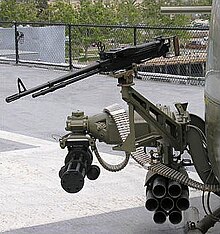




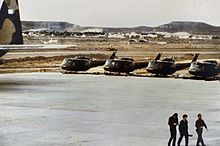
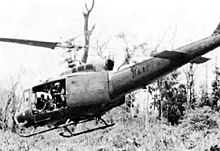


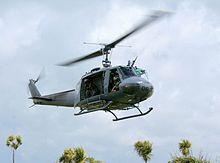
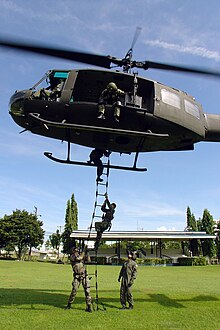
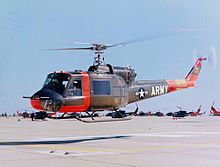
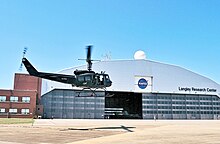




No comments:
Post a Comment